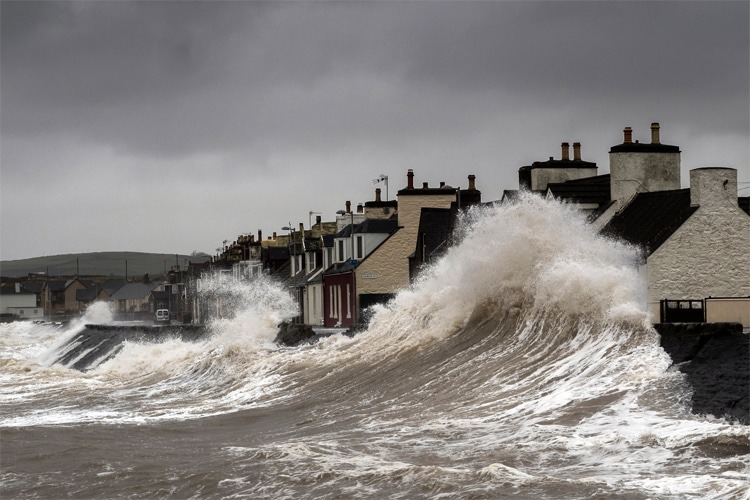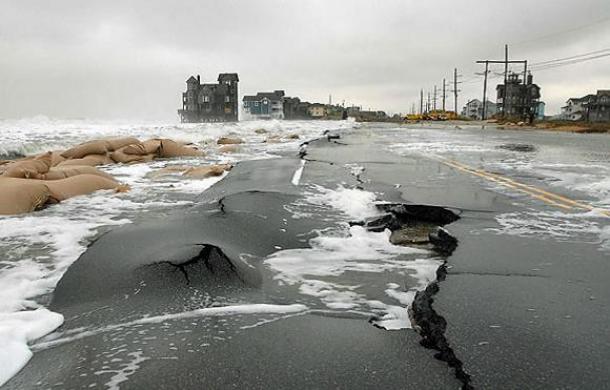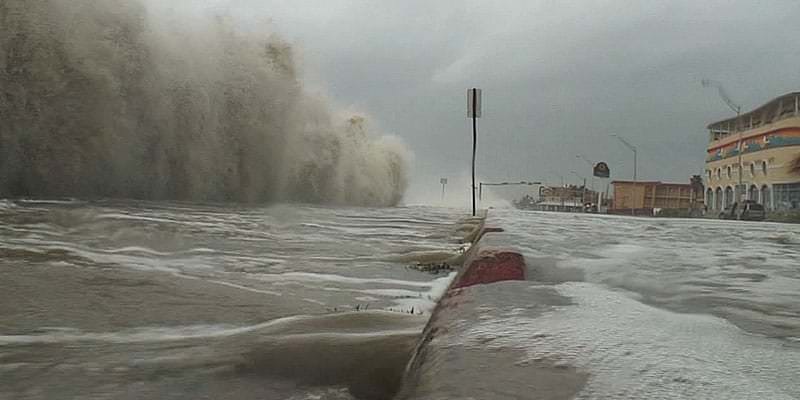Storm surge is one of the most dangerous and destructive phenomena associated with tropical cyclones, hurricanes, and other severe storms. It involves a rapid rise in sea level caused by the intense winds and low pressure of a storm, leading to significant coastal flooding. Understanding storm surge, its causes, impacts, and ways to mitigate its effects is crucial for coastal communities around the world. In this article, we will explore the science behind storm surge, its contributing factors, historical examples, and strategies for preparedness and protection.

What is Storm Surge?
Storm surge is an abnormal rise in sea level above the regular astronomical tides, primarily caused by the strong winds of a storm pushing water toward the shore. This surge can inundate coastal areas, causing extensive flooding, property damage, and loss of life. The severity of storm is influenced by various factors, including the storm’s intensity, speed, size, the angle of approach to the coast, and the coastal topography.
Causes of Storm Surge
Several factors contribute to the formation and severity of storm surge:
1. Wind
The primary driver of storm surge is the strong, sustained winds of a tropical cyclone or hurricane. These winds push large volumes of water toward the coastline, piling it up against the shore. The faster the wind speeds, the higher the surge is likely to be.
2. Low Atmospheric Pressure
The low-pressure center of a storm causes the water level to rise. While this effect is less significant than the impact of the wind, it still contributes to the overall surge. In essence, the lower the pressure, the higher the water can rise.
3. Storm Size and Speed
Larger storms, with extensive wind fields, tend to generate higher storm. Additionally, the speed at which a storm moves can affect the surge. A slow-moving storm can cause a prolonged surge, increasing the potential for severe flooding.
4. Coastal Topography
The shape and features of the coastline and the underwater topography (bathymetry) play a critical role in storm surge dynamics. Shallow, gently sloping continental shelves can amplify storm surge, while steeper shelves tend to reduce it. Bays, estuaries, and inlets can also funnel water, leading to higher surges in those areas.
5. Tide Levels
The timing of the storm relative to the tidal cycle can significantly impact the storm surge height. A surge occurring at high tide will result in higher water levels and more severe flooding compared to one that occurs at low tide.
Impacts of Storm Surge
Storm surge can have devastating consequences for coastal communities:

1. Coastal Flooding
Storm surge is responsible for some of the most severe coastal flooding events. Water can inundate homes, businesses, and infrastructure, leading to extensive property damage and displacement of residents.
2. Erosion
The powerful surge of water can cause significant erosion of beaches and coastal landforms, destroying natural barriers and altering the landscape.
3. Infrastructure Damage
Bridges, roads, utilities, and other critical infrastructure can be severely damaged or destroyed by the force of the surge and the debris it carries.
4. Loss of Life
Storm surge poses a significant threat to human life, especially in densely populated coastal areas. The rapid rise in water levels can catch people off guard, leading to drowning and other life-threatening situations.
5. Environmental Impact
Coastal ecosystems, including wetlands, estuaries, and coral reefs, can be severely affected by storm. Saltwater intrusion can damage freshwater habitats, and the force of the surge can devastate delicate ecosystems.
Historical Examples of Storm Surge
Several notable storms have caused catastrophic storm surges, highlighting the destructive potential of this phenomenon:
Hurricane Katrina (2005)
Hurricane Katrina, one of the most infamous hurricanes in U.S. history, produced a storm surge of up to 28 feet along the Mississippi coast. The surge overwhelmed levees in New Orleans, leading to widespread flooding and significant loss of life.
Typhoon Haiyan (2013)
Typhoon Haiyan, one of the strongest tropical cyclones ever recorded, generated a storm that reached up to 20 feet in some areas of the Philippines. The surge caused massive destruction, particularly in the city of Tacloban, and resulted in thousands of deaths.
Cyclone Nargis (2008)
Cyclone Nargis struck Myanmar in 2008, producing togelup a storm surge that inundated vast areas of the Irrawaddy Delta. The surge, combined with heavy rainfall, caused extensive flooding, killing over 138,000 people and displacing millions.
Mitigation and Preparedness
Given the destructive potential of storm surge, effective mitigation and preparedness strategies are essential for protecting coastal communities:

1. Early Warning Systems
Accurate forecasting and early warning systems are critical for giving people the time they need to evacuate or take protective measures. Meteorological agencies use advanced technology to monitor storms and predict storm surge heights, issuing warnings as necessary.
2. Coastal Defenses
Building and maintaining coastal defenses, such as seawalls, levees, and breakwaters, can help protect communities from storm surge. Natural defenses, like mangroves and wetlands, also play a vital role in absorbing the energy of the surge and reducing its impact.
3. Land Use Planning
Effective land use planning can minimize the risks associated with storm. This includes zoning regulations that prevent development in high-risk areas and the creation of buffer zones along the coast.
4. Evacuation Plans
Having clear and well-practiced evacuation plans ensures that residents can quickly and safely move to higher ground or designated shelters when a storm surge is imminent.
5. Public Education and Awareness
Educating the public about the risks of storm surge and the steps they can take to protect themselves is crucial. Awareness campaigns and community drills can help ensure that people know what to do when a storm threatens.
6. Building Resilience
Constructing buildings and infrastructure to withstand the impacts of storm surge can reduce damage and speed up recovery. This includes elevating structures, using flood-resistant materials, and designing buildings to allow water to pass underneath them.
Conclusion
Storm surge is a powerful and often devastating aspect of tropical cyclones and other severe storms. Understanding its causes, impacts, and mitigation strategies is essential for safeguarding coastal communities. By investing in early warning systems, coastal defenses, land use planning, evacuation plans, public education, and resilient infrastructure, we can reduce the risks associated with storm and protect lives and property.
As climate change continues to influence sea levels and storm intensity, the threat of storm surge may increase. Ongoing research and advancements in forecasting and mitigation will be crucial in helping communities adapt to these changing conditions. Through collective efforts at local, national, and international levels, we can enhance our resilience and ensure that coastal areas are better prepared for the challenges posed by storm.
Read More Article About “All Eyes on Rafah: The Critical Crossing Point in Gaza“



























